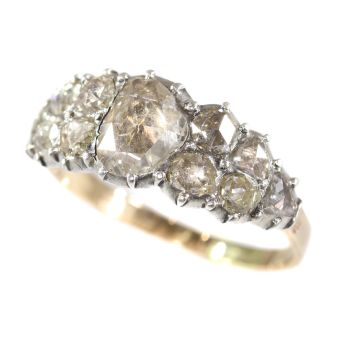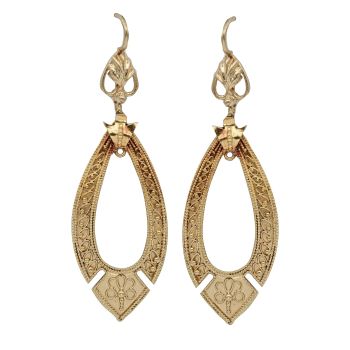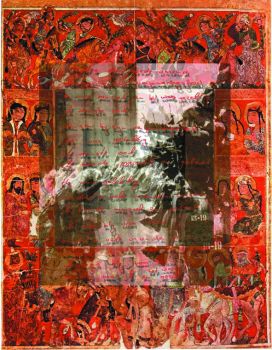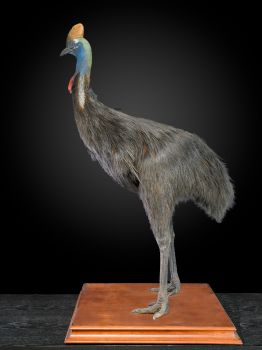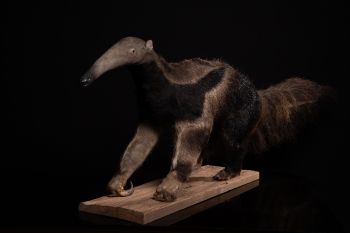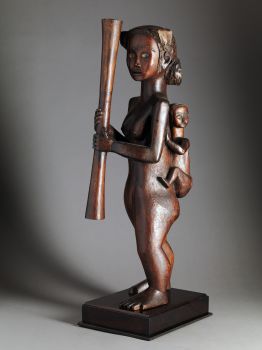19th C SCALED MODEL OF A CHINESE WORKSHOP WITH 17 POLYCHROMES TERRACOTTA FIGURES 1880 - 1900
Artista Desconhecido
80 ⨯ 129 ⨯ 81 cm
ConditionVery good
€ 85.000
Spectandum Gallery
- Sobre arteThis diorama of an artisanal workshop groups 17 Chinese polychromed-decorated nodding head figures dated from the 19th C. Thirteen have nodding heads and are portraits of individuals, and some served as generalized representations of their trade class and occupation. Terracotta figures became popular as objects of curiosity that communicated the costumes and customs of Chinese culture. These figures were usually constructed by moulding clay and were then allowed to air dry and covered in a fine paper. Gesso was applied and the figures were decorated with a water-based gouache. Since these objects were not glazed nor fired in a kiln and are therefore more fragile, they experienced greater wear over time. Although the specific manufacturers and dates of such figures are comparatively rarely recorded, a documented pair of more elaborated nodding-head figures dating to 1803 'copied from the life and brought from Canton’, are in the collection at the Peabody Museum in Salem, Massachusetts (C.L. Crossman, The China Trade, Woodbridge, Suffolk, 1991, p.317, col.pl. 112). Similarly, a group of nodding-head figures were sold from the collection of David Style, Esq., Christie's house sale, Wateringbury Place, Maidstone, Kent, 31 May-2 June 1978, lots 200-204.This diorama was made for an international European exhibition; most probably “Kina I Tivoli” in the Tivoli gardens in Kopenhagen-Denmark 1902.We acquired them from a Danish private collection
- Sobre artista
Pode acontecer que um artista ou criador seja desconhecido.
Algumas obras não devem ser determinadas por quem são feitas ou são feitas por (um grupo de) artesãos. Exemplos são estátuas dos tempos antigos, móveis, espelhos ou assinaturas que não são claras ou legíveis, mas também algumas obras não são assinadas.
Além disso, você pode encontrar a seguinte descrição:
•"Atribuído a …." Na opinião deles, provavelmente uma obra do artista, pelo menos em parte
• “Estúdio de…” ou “Oficina de” Em sua opinião um trabalho executado no estúdio ou oficina do artista, possivelmente sob sua supervisão
• "Círculo de ..." Na opinião deles, uma obra da época do artista mostrando sua influência, intimamente associada ao artista, mas não necessariamente seu aluno
•“Estilo de…” ou “Seguidor de…” Na opinião deles, um trabalho executado no estilo do artista, mas não necessariamente por um aluno; pode ser contemporâneo ou quase contemporâneo
• "Maneira de ..." Na opinião deles, uma obra no estilo do artista, mas de data posterior
•"Depois …." Na opinião deles uma cópia (de qualquer data) de uma obra do artista
• “Assinado…”, “Datado…” ou “Inscrito” Na opinião deles, a obra foi assinada/datada/inscrita pelo artista. A adição de um ponto de interrogação indica um elemento de dúvida
• "Com assinatura ….”, “Com data ….”, “Com inscrição ….” ou “Tem assinatura/data/inscrição” na opinião deles a assinatura/data/inscrição foi adicionada por outra pessoa que não o artista
Você está interessado em comprar esta obra de arte?
Artwork details
Related artworks
Artista Desconhecido
Dois Centauros, França ou Itálialate 18th
Preço em pedidoRobert Schreuder Antiquair
1 - 4 / 12Artista Desconhecido
UM MODELO JAPONÊS DE UM NORIMONO, UM PALANQUIM1650 - 1700
Preço em pedidoZebregs & Röell - Fine Art - Antiques
Artista Desconhecido
The Stamford Raffles Secretaires.1800 - 1813
Preço em pedidoZebregs & Röell - Fine Art - Antiques
1 - 4 / 24- 1 - 4 / 6









